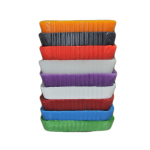Acidity in cheese is a pleasant flavour but it can be too strong at times. Different cheeses require quite a lot of acid, eg strong crumbly Feta’s, Fresh Acid cheeses, sharp Cheddars and even yoghurt. Other surprising cheeses that only require a little acid include Blue Veins, Edams and Muensters.
Lactic acid is produced by the fermentation of milk sugar or lactose to make lactic acid. To reduce the acidity of the cheese, the ability of the starter culture to produce this acid must be slowed down or stopped. There are several ways that the cheesemaker can do this:
1. Add less starter at the beginning of the cheesemaking process
2. Decrease the holding time between adding starter and adding rennet
3. Decrease the holding time between adding rennet and cutting
4. Reducing the size of the cut
5. Increase the speed of stirring and amount of stirring undertaken
Changing the cheesemaking process to achieve the desired result should only be done minimally and would usually include only implementing the above steps one at a time.



